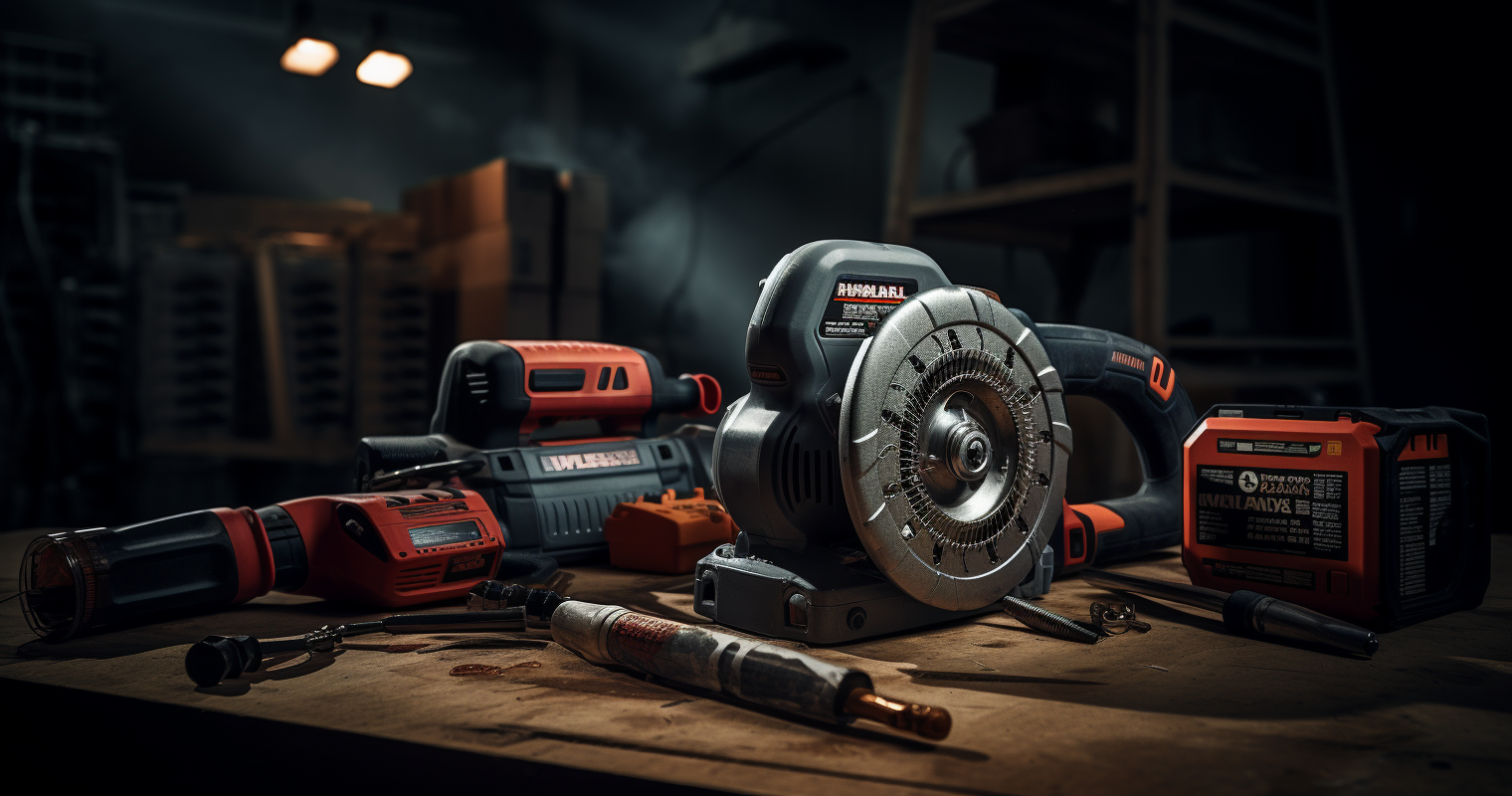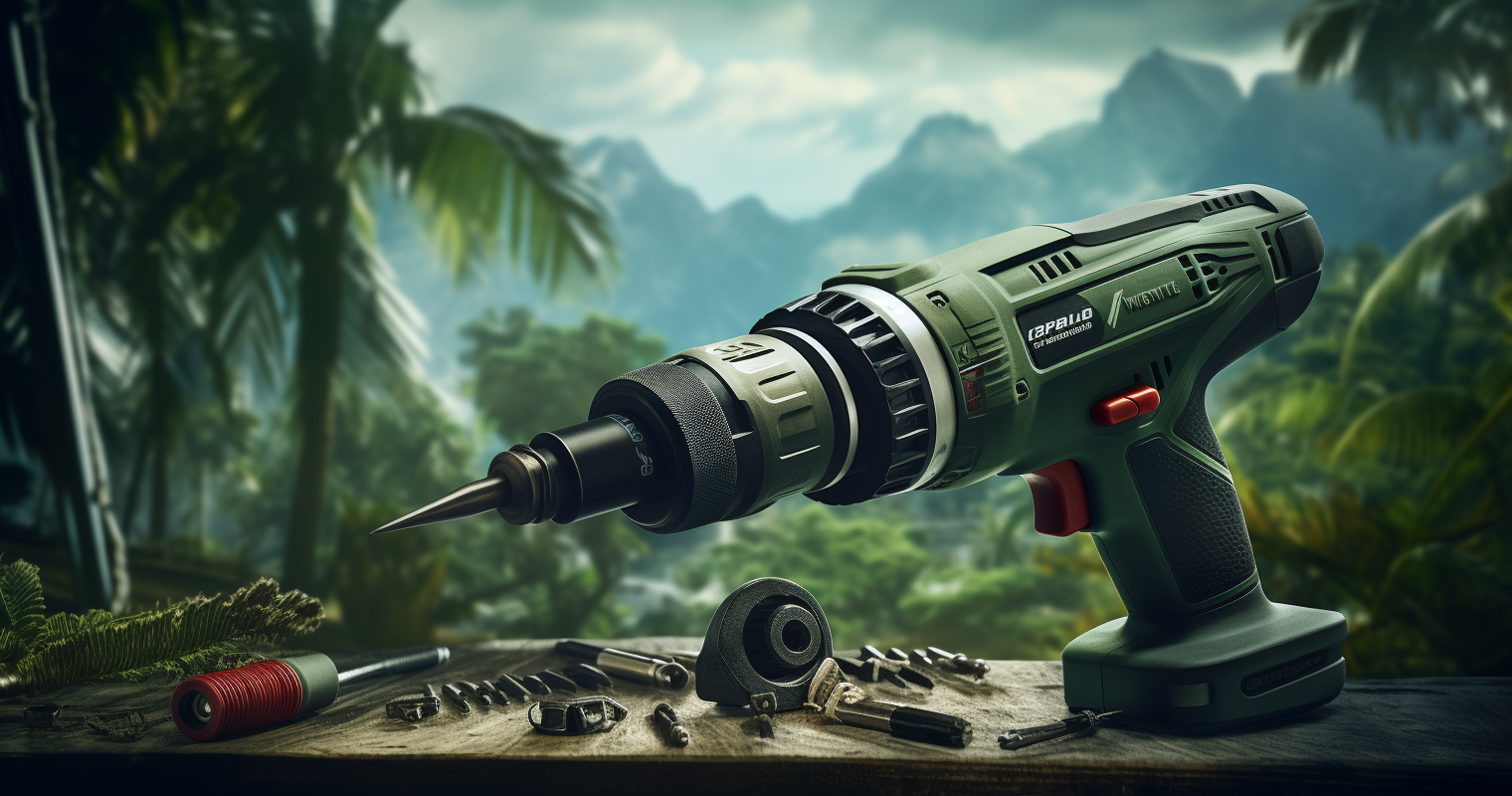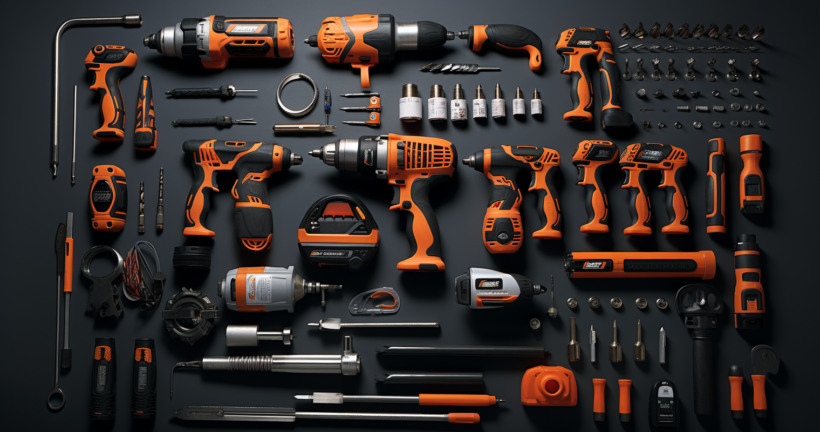Understanding the power consumption of your tools is crucial for both safety and efficiency. How Many Watts Do Power Tools Use? is a common question asked by many homeowners and professionals alike. The average power drill uses around 600-900 watts, while a circular saw can use over 1200 watts. Knowing the wattage of your power tools can help you select the right generator, prevent overload, and ultimately save on electricity bills. In this article, we will break down the power usage of common power tools, discuss factors affecting their consumption, and guide you in selecting the right power source. Let’s dive in and demystify the power consumption of power tools.
Why is it Important to Know the Wattage of Power Tools?

Knowing the wattage of power tools is crucial for several reasons. First and foremost, understanding the energy consumption of tools is essential for managing your electricity bills. The more watts a tool uses, the more it will cost to operate. For example, a tool that operates at 1000 watts will use 1 kilowatt-hour (kWh) of electricity in 1 hour. According to the U.S. Energy Information Administration, the average cost of electricity in the United States is 13.31 cents per kWh. So, using a 1000-watt tool for an hour would cost approximately 13.31 cents.
Secondly, ensuring safety and preventing overload is another critical reason for knowing the wattage of your tools. Overloading a power circuit can lead to tripped breakers, blown fuses, or even electrical fires. For example, if you are using a power strip with a maximum load of 1800 watts, you need to ensure that the combined wattage of all the tools plugged into it does not exceed this limit.
Lastly, selecting the right generator or power source is essential for those working in areas without a reliable electricity supply. Generators are rated based on their maximum power output, measured in watts. Knowing the wattage requirements of your tools will help you select a generator that can handle the load. For more information on this topic, check out this article on Power Tools: How Much Power Do They Need? and our guide on Electrical Power Tool Safety.
Factors Affecting Power Consumption of Power Tools

The power consumption of power tools can vary based on several factors. Firstly, the size and type of the tool play a significant role in its power consumption. Larger tools with more powerful motors will generally consume more power. For example, a table saw will typically use more power than a handheld circular saw.
Secondly, the duration of usage also affects power consumption. The longer you use a tool, the more electricity it will consume. It’s pretty straightforward – using a 1000-watt tool for 2 hours will consume twice as much electricity as using it for 1 hour.
Thirdly, the tool’s efficiency and condition can also impact its power consumption. Tools that are well-maintained and in good condition will operate more efficiently and consume less power. For example, a circular saw with a dull blade will require more power to cut through wood than one with a sharp blade. Regular maintenance and proper care of your tools can help reduce their power consumption. For more information on the wattage of electric power tools, check out this article on Wattage of Electric Power Tools.
How Many Watts Do Common Power Tools Use?
| Power Tool | Average Wattage Range |
|---|---|
| Drill | 500 – 1000 watts |
| Circular Saw | 1200 – 1800 watts |
| Table Saw | 1500 – 2000 watts |
| Air Compressor | 1000 – 1500 watts |
| Angle Grinder | 500 – 1500 watts |
When it comes to power tools, the wattage can vary significantly from one tool to another. Here is a list of some common power tools and their average wattage requirements:
- Drill: A standard corded drill typically requires between 500 to 1000 watts.
- Circular Saw: A circular saw usually needs around 1200 to 1800 watts.
- Table Saw: A table saw generally requires between 1500 to 2000 watts.
- Air Compressor: An air compressor usually needs around 1000 to 1500 watts.
- Angle Grinder: An angle grinder typically requires between 500 to 1500 watts.
For a more comprehensive list of power tools and their wattage requirements, you can check out this Power Tools, Contractors Appliances Wattage Requirements article. Additionally, our Types of Power Tools guide provides an overview of various power tools and their applications.
Tips for Reducing Power Consumption of Power Tools
Using power tools can consume a lot of electricity, which not only impacts your wallet but also the environment. Here are some tips for reducing the power consumption of your power tools:
- Regular Maintenance and Cleaning: Keeping your tools clean and well-maintained can significantly improve their efficiency and reduce power consumption. For example, a saw with a clean and sharp blade will cut through wood more easily than one with a dirty and dull blade, requiring less power to operate.
- Using Tools with Variable Speed Settings: Tools with variable speed settings allow you to adjust the speed based on the task at hand. Using the lowest speed necessary for the job can help reduce power consumption.
- Using Cordless Tools When Possible: Cordless tools are powered by batteries and generally consume less power than their corded counterparts. Additionally, using cordless tools eliminates the need for a generator or other external power source, which can be less energy-efficient.
Remember, selecting the right generator for your power tools is also crucial for efficient power usage. Check out this article What Size Generator Do I Need? for more information on selecting the right generator for your needs.
Knowing How Many Watts Power Tools Use is essential for managing your electricity costs, ensuring safety, and selecting the right power source. Regular maintenance, using tools with variable speed settings, and opting for cordless tools when possible can help reduce the power consumption of your power tools.
Choosing the Right Generator for Your Power Tools

Selecting the right generator for your power tools is crucial for efficient and safe operation. Here are some key considerations to keep in mind:
- Understanding the Power Requirements of Your Tools: The first step in selecting the right generator is to understand the power requirements of your tools. Make a list of all the tools you plan to use simultaneously and add up their wattage requirements. Don’t forget to include the wattage of any other devices or appliances you plan to power with the generator.
- Considering the Starting and Running Wattage: Power tools often require more power to start than they do to run. This is known as the starting wattage or peak wattage. Once the tool is running, the wattage required drops to the running or rated wattage. It’s essential to select a generator that can handle the combined starting wattage of all your tools. For more information on power consumption, check out this Power Consumption Chart.
For example, if you plan to use a power drill that requires 900 watts to start and 600 watts to run, and a circular saw that requires 1200 watts to start and 1000 watts to run, you will need a generator with a starting wattage of at least 2100 watts (900 + 1200) and a running wattage of at least 1600 watts (600 + 1000).
For more tips on using power tools, check out our Instructions to Use Power Drill guide.
Alternative Power Sources for Power Tools
| Power Source | Advantages | Limitations |
|---|---|---|
| Generators | Suitable for high-wattage tools | Noise, fuel requirement, emissions |
| Solar Panels | Renewable energy source, remote operation | Weather-dependent, may not support high-wattage |
| Battery-Powered | Portable, no external power source required | Limited battery capacity, recharging needed |
While generators are a common power source for power tools, there are also several alternative options available:
- Using Solar Power: Solar panels can be a great way to power your tools, especially if you are working in a remote location with plenty of sunlight. However, keep in mind that solar panels typically provide DC power, so you will need an inverter to convert it to AC power for your tools. Additionally, the wattage output of solar panels can vary based on the sunlight’s intensity, so it may not be suitable for high-wattage tools.
- Battery-Powered Tools: Battery-powered tools are becoming increasingly popular due to their convenience and portability. These tools are powered by rechargeable batteries and do not require a separate power source. However, keep in mind that the battery’s capacity will limit the tool’s run time, and you will need to recharge the batteries regularly.
For more information on the wattage requirements of various appliances and devices, check out this Usage Chart.
Frequently Asked Questions
How Many Watts Do Power Tools Use?
Different power tools have different wattage requirements. For example, a standard power drill may require between 600-900 watts, while a circular saw may need over 1200 watts. It is essential to check the manufacturer’s specifications for each tool.
Why is it Important to Know the Wattage of Power Tools?
Knowing the wattage of your power tools is crucial for several reasons:
- It helps you select the right generator or power source.
- It prevents overload and potential damage to your tools.
- It helps you manage your electricity consumption and bills.
How Can I Reduce the Power Consumption of My Power Tools?
To reduce the power consumption of your power tools:
- Perform regular maintenance and cleaning.
- Use tools with variable speed settings.
- Opt for cordless tools when possible.
What Are the Alternative Power Sources for Power Tools?
Alternative power sources for power tools include:
- Solar power
- Battery-powered tools
- Portable generators
How Do I Choose the Right Generator for My Power Tools?
To choose the right generator for your power tools:
- Understand the power requirements of your tools.
- Consider the starting and running wattage of your tools.
- Select a generator with a higher wattage than your total tool requirements.
Can I Use a Solar Panel as a Power Source for My Power Tools?
Yes, you can use a solar panel as a power source for your power tools. However, you will need a solar panel with a high enough wattage output and a suitable inverter to convert the solar power to usable electricity for your tools.
Conclusion
Understanding the power usage of your power tools is essential for safety, efficiency, and cost-saving. We have discussed the importance of knowing the wattage of your tools, the factors affecting their power consumption, and how to select the right power source. Remember, the key to efficient power usage is regular maintenance, using the right tools for the job, and selecting the appropriate power source. Now that you know How Many Watts Power Tools Use, you can make informed decisions and work more efficiently.
Thank you for reading!
